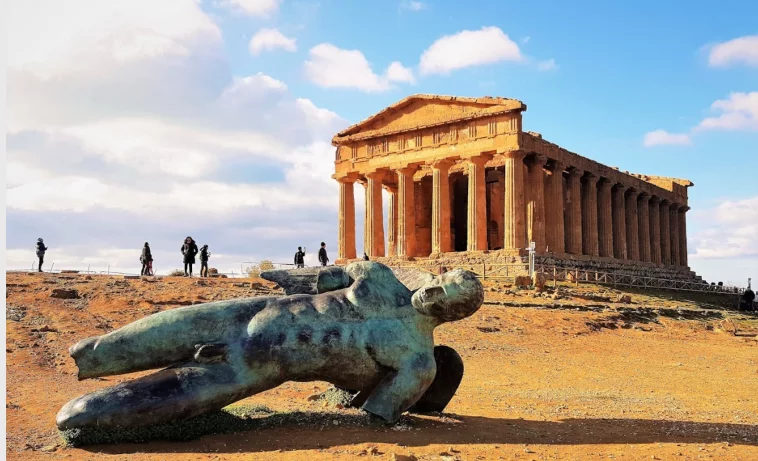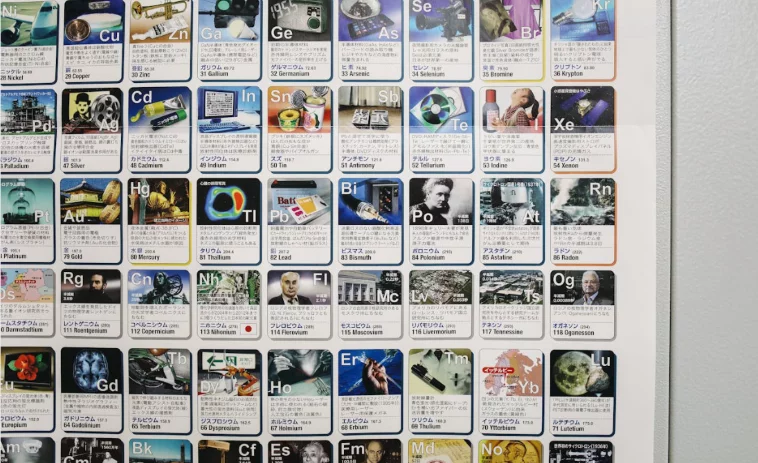The story of the atom and its particles

The question of what is made of everything that we see, feel, etc… runs through history and has troubled scientists and philosophers for centuries.
Greeks
Actually already 2600 years, because it was installed by Thales from Miletus who lived in the 6th century BC. Miletus was a Greek city on the coast of Asia Minor.
And he was also the first to think seriously about the question of what the world is made of, the first to give a scientific answer to that question, and the first to give the wrong answer. And his answer was – water.
In addition, even today, 2600 years later, with much greater knowledge and understanding of nature and the laws that govern it, we still do not have a complete answer to that question, so it is still a mystery.
Let’s discuss it a little bit about water. Water has some remarkable properties.

We find it everywhere and life on Earth is not possible without it. Plants grow when you water them, they are full of water and you can squeeze them out, and many objects sizzle and release water when you heat them up well.
In addition, water exists in three states, liquid, solid and gaseous, and it easily changes from one to another and – and when you have all this in mind, it is not far from the mind to conclude that the basis of everything is water.
After all, until the 18th century, many scientists believed that water could turn into earth!
Democritus Democritus, 4th century BC.
After Thales, all the wise men had an opinion about what the world was made of, each with their own reasons and evidence.
Democritus traveled a lot around the world and wrote a lot, and he wrote about everything, about cosmology, astronomy, physics, painting, botany, magnetism, music, linguistics, etc.
He believed that in the cosmos there are many worlds that are born and die, that in the cosmos there is no “up” and “down” and so on. His work “On Emptiness” is well known.
If you take an apple and cut it into smaller and smaller pieces, you will eventually end up with one piece that cannot be split any more no matter how perfectly sharp and thin a knife you have.
So, you cut and cut and eventually you get to a particle that simply cannot be cut anymore because it is indivisible, or, as the Greeks would say, because it is an atom (atom in translation means “indivisible”). Well, from atoms, those everything is made of tiny particles, said Democritus.
And water, and earth etc. – there are many kinds of atoms that differ from each other in form, they are indestructible, etc.
There were those who accepted Democritus and his atomism and even more who did not, and that, as far as the question of what the world is made of, was for the next 2200 years.

There were various theories, various philosophies, but without anything tangible and without concrete results. The basic part, or as it is called in popular literature, the basic brick, remained only at the level of theory and elusive in practice.
Not to be unfair, there were good theories, and many greats of science and philosophy said a lot of wise thoughts about the brick.
Kepler, Galileo, Newton, Ruđer Bošković and many others shed light on this mystery as much as they could and deserve recognition, but still the entire period up to the 19th century was just a great preparation, gathering scientific knowledge and getting to know the essence of nature that will create the basis for… well, just read on!
Dalton Dalton
Thus, we come to John Dalton who lived from 1766 to 1844.
Dalton was the kind of scientist we see in happy movies: absent-minded, pensive, preoccupied with triangles and numbers, and completely confused in all situations outside of science.
- Dalton discovered that the world is colored! That it was much more colorful than he had seen it in person.
- Today, the eye defect that Dalton had is called colorblindness.
- In other words, Dalton was color blind and he managed to realize it at a time when this flaw was not known and when some people spent their whole lives in gray without being aware of it.
- He bequeathed his eyes to science, to be examined after his death. 150 years later this was done, and it was discovered that his DNA did not contain the genes that give the pigment sensitive to the color green.
- Apart from this, Dalton proved that springs arise from accumulated rainwater in the ground, that the volume of gas depends on temperature, and so on.
In Dalton’s time, chemistry was already advanced, a lot of knowledge had been gathered, so all that was missing was a bright mind that would understand what Dalton understood. The story goes like this.

Chemical compounds consist of elements always in the same proportions. To make carbon monoxide you need 12 grams (kilograms, etc.) of carbon and 16 grams (kilograms, etc.) of oxygen.
So, the ratio is 12:16.
Corresponding proportions appear in all chemical compounds, no matter how complex. How to explain it?
Dalton started from the fact that every smallest part of a chemical element has its own specific weight, and that the elements bond with each other in a one-to-one relationship, so in chemical compounds there is always the same proportion of constituent elements:
- one part of hydrogen + one part of oxygen = water.
Or, in chemical language, water is HO.
And that smallest part is indivisible. Dalton called it: the atom.
Regardless of the fact that Dalton was not completely right (elements do not bond 1:1; let’s say to get water you need two atoms of hydrogen and one atom of oxygen, so the formula is H2O), it was colossal knowledge.
We are eager to discuss this further in the upcoming blogs, so please make sure to come back and check out the rest of this revolutionary story, we promise it will open new horizons in your beautiful, curious human mind.


